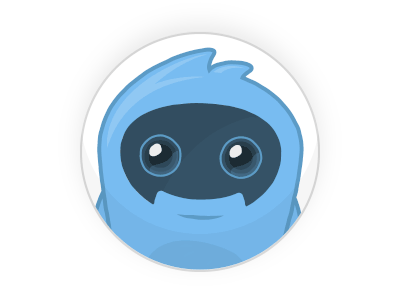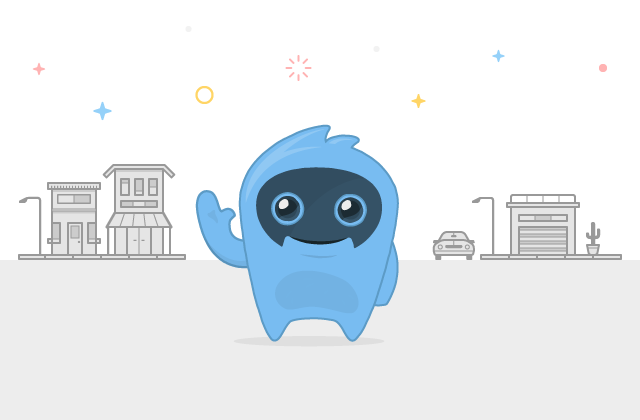Two days ago, a project I’ve been working on for a little over two years was unveiled to the world. Meet Ozlo, your friendly AI sidekick!
First things first: if you haven’t signed up yet, hit up this link which includes a VIP code to fast-track you into our invite-only app.
A lot has been said about Ozlo already: Charles Jolley (co-founder), John Lilly (investor), Lloyd Hilaiel (friend & colleague), Todd Agulnick (friend & colleague) and even Buzzfeed! Here’s my perspective…
Why
It didn’t take me very long since I first heard the idea for a better mobile search experience from Mike 1 and Charles to stop what I was doing and jump on board.
The fundamental problem we’re trying to solve is that even though our smart phones enable us to do a lot more than we could before, the process of finding people, places and things on them is not very different from how you would do it on a desktop.
That’s usually the natural course for any technology to take.2 The first application on any new platform usually is a v1 – “available here too” – product. This first version often under-utilizes the platform’s true capabilities and its creators can quickly be lulled into thinking that they’ve created the optimal experience for the consumer.
What’s v2 for search on mobile devices? To answer this question is why we created Ozlo.
What
In attempting to answer this question, we built something that we thought might work. It didn’t work quite as well as we’d have liked. So we did it again. And again. Fast-forward two years and you arrive at Ozlo: a personal and intelligent companion that helps you find things.
The first manifestation of that idea is an iOS application that can help you find food. In the app, you interact with Ozlo via a chat-like interface. Here I am trying to find that place that I can’t quite remember the name of:
This iteration of the app is purposely focused on one goal – finding you food. But there are several underlying themes that have the potential to pave Ozlo’s way to something grander:
Conversational
Searching for something is usually not a one-shot type of activity. Humans don’t work that way. We ask a question, and often follow up with more questions; until we’ve refined our own thoughts to ultimately get the answer we’re looking for. It’s exciting that Ozlo has the potential to participate in this back-and-forth.
Personal
Ozlo has the potential to know you over time, learn about your preferences and interests in a meaningful way. To me, this brings a face to the otherwise utilitarian search box that feels disconnected and impersonal.
As a vegetarian, I can already appreciate Ozlo helping me find hidden gems at restaurants I’d usually dismiss. What if Ozlo could also recommend movies for me to watch, grab that hard to get restaurant reservation and help me find the perfect anniversary gift?
Intelligent
In the past few years, technology seems like it’s finally getting to the point where building an agent that can really understand what humans say is tantalizingly close to being possible.3
Ozlo is different from usual search engines, the ones that return results with the same words as your query, without knowing what the words mean. Ozlo tries to understand what you said and then tries to arrive at an answer. To me, that makes Ozlo intelligent.
Training Ozlo to understand the nuances of human language is going to be a very difficult task. But it is by no means impossible, given the resources we (as computer engineers and scientists) have at our disposal these days.
How
The really interesting bits are in the technology behind Ozlo and how we built it. This is some of the deepest technology I’ve ever had a part in building and I’m extremely proud of it. To make Ozlo work, we’ve had to write several pieces of software from scratch.
On the backend:
- Data Pipeline:
to ingest, dedupe and glean structure from the mess of data we find; at scale; with speed. - Search Engine:
to index the facts our data pipeline emits and allow us to efficiently query it; at scale, with speed. - Query Understanding:
to turn human language into a series of structured queries machines can understand. - Dialog System:
to keep track of the high-level structure of the conversation you’re having with Ozlo.
On the frontend:
- Language Synthesis:
to turn structured results back into friendly text humans can understand. - Layout Language:
to efficiently and generatively render results as a graphical layout. - View Synthesis:
to aggregate, refine and generate the final layout humans will see. - iOS App:
to turn that layout back into pixels that are delightful to look at and interact with.
We built most of our backend in Go. It’s no secret that I’ve been a fan of Go since its inception, primarily because of my affinity to Plan 9; but this is the first time I’ve been able to observe it being used at a large scale for a production-quality project. I couldn’t be happier with our choice, and I’ll admit that I’ve had some days where I get into work only because I’m excited by the prospect of writing some Go.
We built most of our frontend in NodeJS (and ObjC for the iOS app, of course). It’s also no secret that I’ve been a huge proponent of Javascript and our frontend has been chugging along happily (we’ve had a few refactorings, but really, what JS code base doesn’t go through atleast two?). Say what you will about JS & NPM, especially in the recent past, one cannot deny the convenience and speed of development that is offered by the JS runtime.
I hope you share my excitement about Ozlo. Looking forward to whatever comes next!
-
John calls Mike an “anytime, anything, anywhere” person, and it couldn’t be truer. ↩
-
Take publishing for instance – when tablets were first introduced – a publication’s first instinct was to just take what they had on paper and turn it into pixels. ↩
-
We’ve observed the resurrection of the term “AI” to refer to this sort of thing. It’s often an overloaded term, but there is no doubt that the industry as a whole has made big technological strides in deep learning and machine intelligence. ↩

